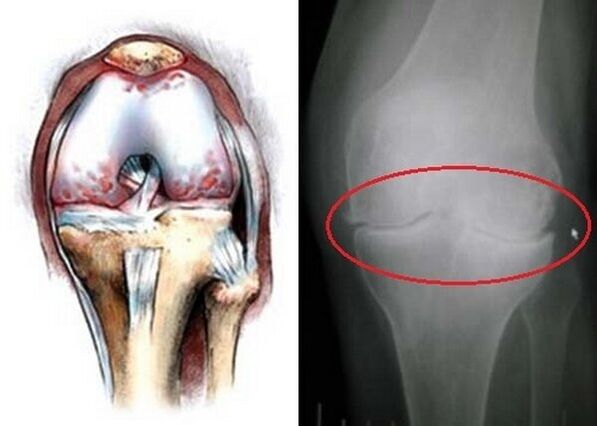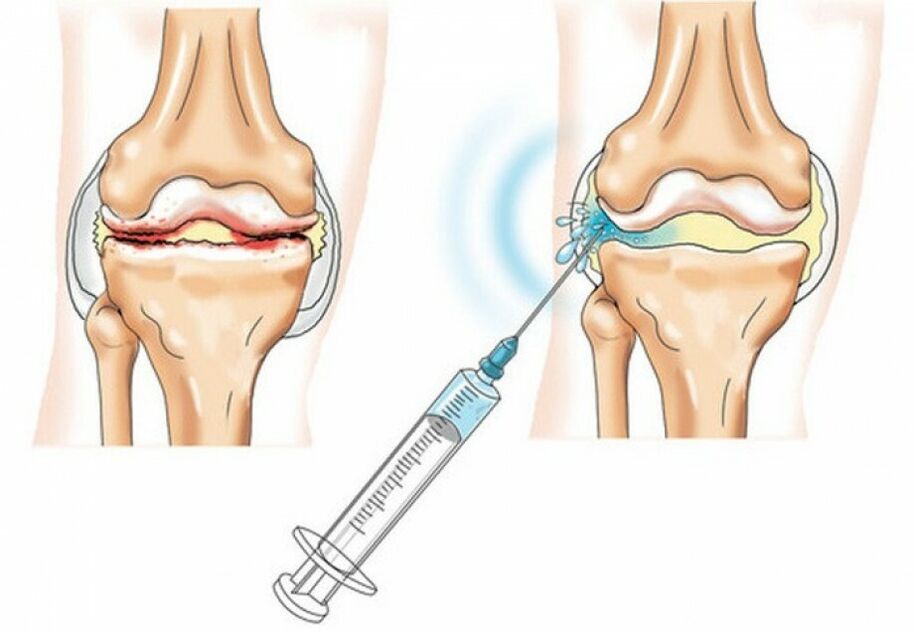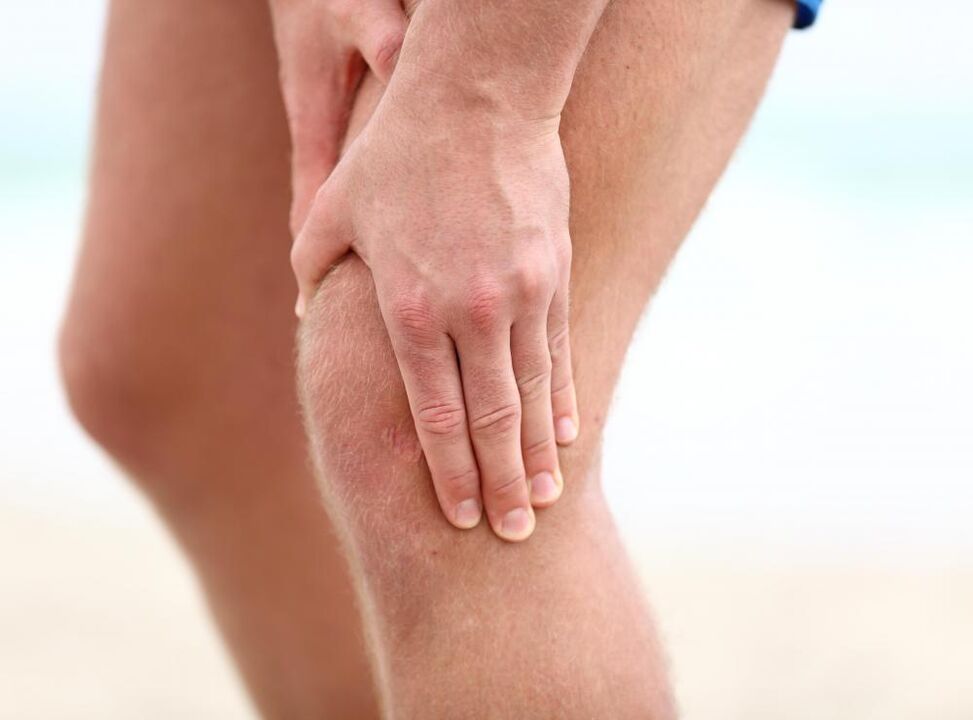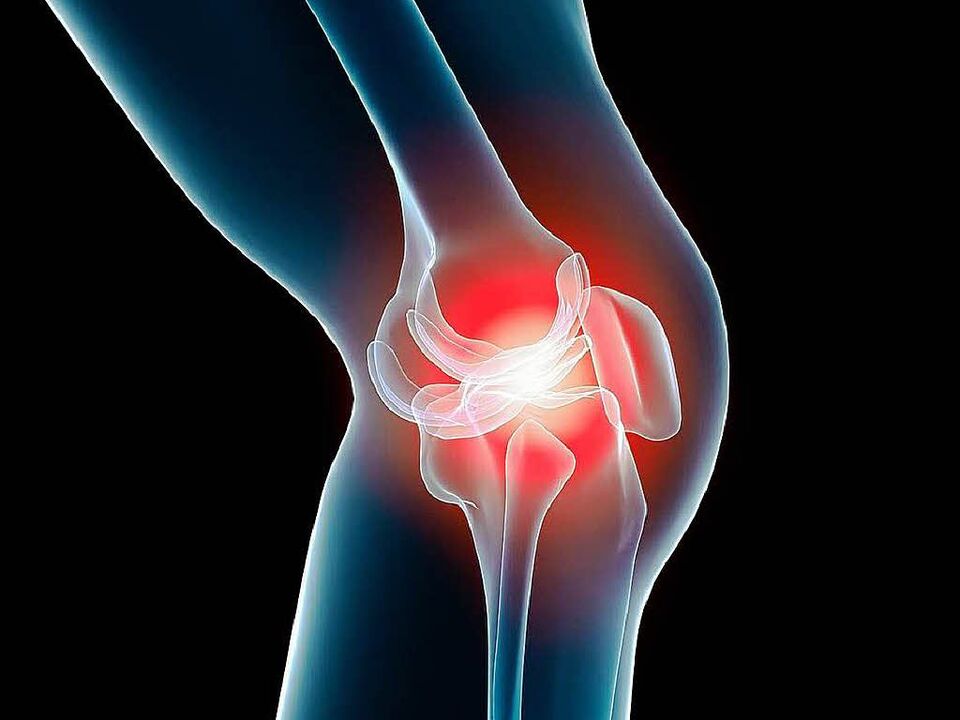Bad bending of the legs, inability to walk without support - all these seem to be signs of old age, but in fact they can be caused by illness. Knowledge of this disease can help everyone, because timely treatment prolongs the youth of the joints. Gonarthrosis of the knee joint has another name - deforming arthrosis or arthrosis of the joint.

The disease belongs to the group of degenerative-dystrophic diseases. Under the influence of pathogenic factors, changes develop in the tissues of the joint, and with this pathology, not only the cartilages of the knee joint suffer, but also the bones, ligaments, joint capsule and muscles that ensure its work.
This disease is one of the most common among the pathologies of the musculoskeletal system. Due to changes in the structure of hyaline cartilage tissue, they lose their elasticity, hardness and gradually disintegrate. This leads to an increase in the impact on bone tissues, the appearance of so-called osteophytes on them. These are "spikes", which are bony growths in the joint. If arthrosis of the knee joint is not treated, then the cartilage tissue can gradually disappear completely, the bones will be deformed and the function and efficiency of the joint will be lost.
Causes of gonarthrosis of the knee

This disease is classified as idiopathic, i. e. the causes of osteoarthritis of the knee joint are not yet precisely understood. There are two main types of gonarthrosis: primary and secondary.
Primary or idiopathic gonarthrosis of the knee joint develops due to metabolic and circulatory disorders in the lower limbs. This form of the disease mainly affects the elderly, especially women, and people who are overweight. The reason for the development of degenerative-dystrophic changes in cartilage tissue can be excessive load on the joint, violation of normal blood circulation and multiple tissue microtraumas. Hormonal disorders and endocrine disorders can also lead to this.
Secondary or traumatic gonarthrosis occurs as a result of mechanical damage to the joint. This leads to:
- knee injuries - damage to the ligaments, menisci of the knee joint, fractures and cracks in the bones with hemarthrosis;
- various inflammatory diseases - rheumatism, arthritis;
- non-inflammatory joint lesions - chondrosis, arthrosis of different etiology;
- untimely and incomplete treatment of knee joint diseases;
- past trauma and injury.
Symptoms of the disease
The symptoms of knee osteoarthritis develop gradually. At the beginning of the disease, pain appears during physical exertion, when overtired or after a long walk, then other symptoms join and a detailed clinical picture of the disease appears.

Symptoms:
- pain in the knee joint when moving;
- swelling of the joint;
- limitation of movement in the joint;
- stiffness of the knee joint;
- instability when leaning on a sick leg;
- visible deformation of the bones of the joint.
Stages of the disease gonarthrosis
In the clinical picture, there are several stages that reflect the severity of the disease:
- Stage 1 - slight limitation of movement in the joint, increased fatigue of the limb, the pain is weak, appears at the beginning of movement or after physical effort, at rest the pain and stiffness of the joint disappear. The bones keep their shape, there is no deformation. The X-ray shows a slight narrowing of the joint space.
- Stage 2 - there is a pronounced restriction of movement, pain when walking becomes constant, especially aggravated by physical exertion, prolonged standing. There is a pronounced crunch in the joint during movement, lameness, bones are deformed, ligaments and muscles are weakened. On the X-ray, the joint is narrowed 3 times compared to the norm, osteophytes grow on the bones, fluid may appear in the joint cavity.
- Stage 3 - the pain becomes constant, does not disappear after rest and at rest. The movement is sharply limited, a violation of blood circulation in the joint is possible. On the X-ray, the joint is practically absent, the bones are sharply deformed, strong growths of the bone tissue are noted.
Diagnosis and treatment of gonarthrosis
Diagnosis of the disease includes an examination of the patient and an X-ray examination of the affected limb.
Treatment of the disease should begin as early as possible. A thorough examination and consultation with an experienced specialist is necessary, since this disease has non-specific symptoms and is easily confused with other lesions of the joint system.
The main principles of treatment, which are aimed at therapeutic effects:
- elimination of pain in the knee joint;
- improving blood circulation and accelerating the regeneration of cartilage tissue;
- reducing the pressure between the bones of the joint;
- restoration of limb mobility;
- strengthening muscles and ligaments.
Methods of treatment of gonarthrosis
Treatment of gonarthrosis is carried out both with drugs and with the help of physical therapy exercises, folk remedies and manual therapy.

- Nonsteroidal anti-inflammatory drugs (NSAIDs). They are traditionally used in the treatment of inflammatory diseases of the joints. Good pain relief, reducing swelling and inflammation. But the use of these drugs gives only temporary relief and does not cure the disease itself. In addition, they have many contraindications and side effects.
- Chondroprotectors are the most etiological treatment, they help to regenerate cartilage tissue and eliminate the cause of the disease. Their use is effective in the early stages of the disease. Long-term use of chondroprotectors is necessary to achieve results.
- Local remedies - various ointments and creams - have anti-inflammatory and analgesic effects.
- Intra-articular injections are used for emergency treatment. The most commonly used drugs are corticosteroid hormones. They quickly and effectively suppress pain and inflammation inside the joint, but, like NSAIDs, have only a symptomatic effect.
- Manual therapy and physical therapy - at stages 1 and 2 of the disease can give a significant therapeutic effect.
- Diet. Gonarthrosis of the knee joint is called the disease of "salt deposits". Therefore, with this disease, you must follow a diet that excludes foods that contribute to the formation of salt. It is necessary to limit the intake of dietary salt to 1 g per day, meat, canned goods, sweets, fatty foods, flour.
- Walking support - using crutches or a cane can significantly reduce the stress on the knee joint and help speed recovery.
- Therapeutic gymnastics is the main method of rehabilitation after treatment of gonarthrosis. Only special exercises will help restore lost mobility, strengthen muscles and ligaments and improve blood circulation. It is impossible to restore limb functions without specially designed exercises.
- Surgical treatment - in the absence of effect from therapeutic methods, in the 3rd stage of the disease, in case of severe deformation of the joints, surgery is necessary. Usually this is joint replacement. This operation allows you to return the mobility of the limb, but there are many contraindications and limitations. It is also quite expensive financially.
A complete cure of this disease is almost impossible. To achieve a stable remission of the disease, you must follow all the doctor's recommendations, try to move more, do special exercises, take chondroprotectors and drugs that improve blood circulation, and follow a diet.

























